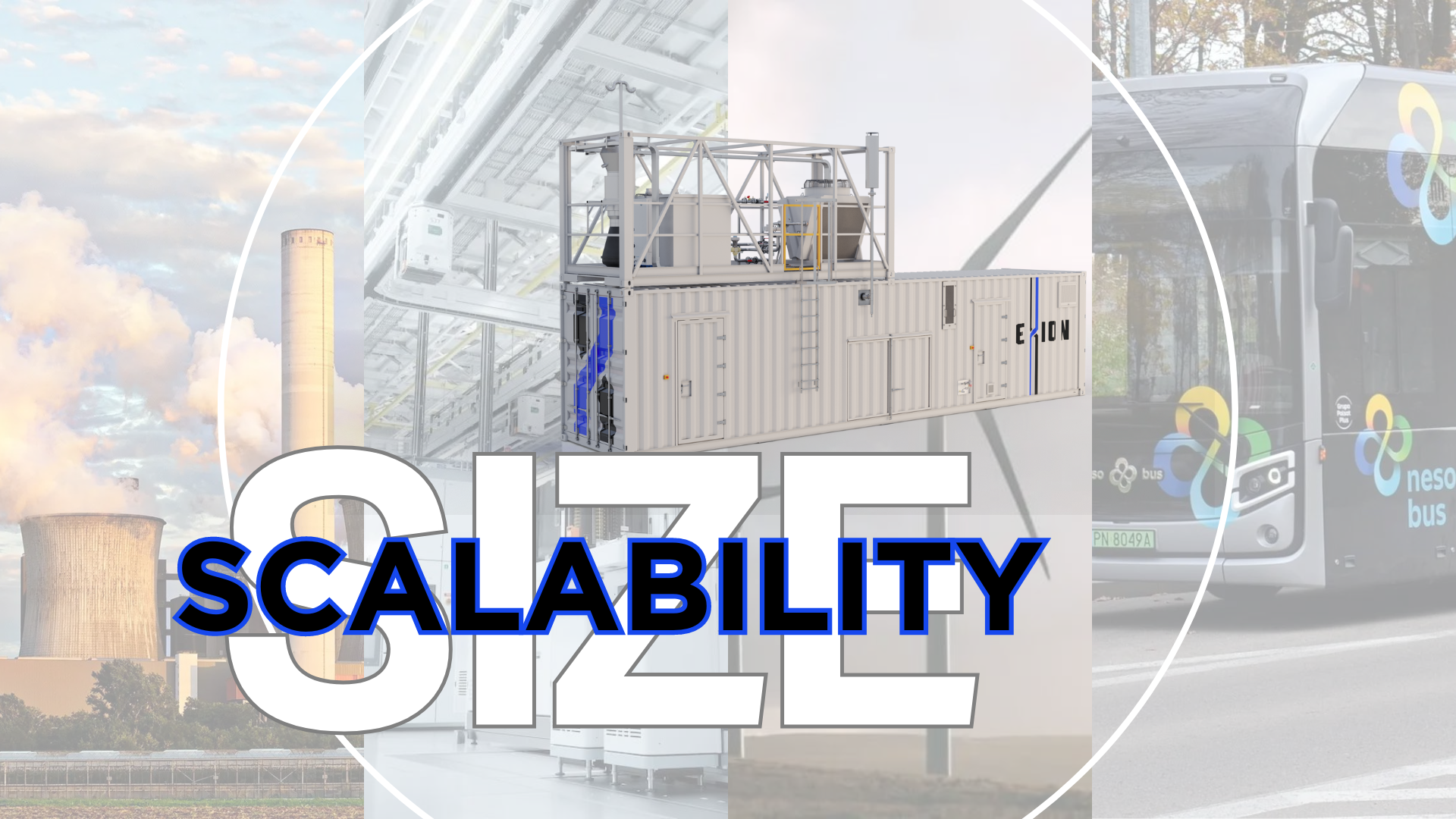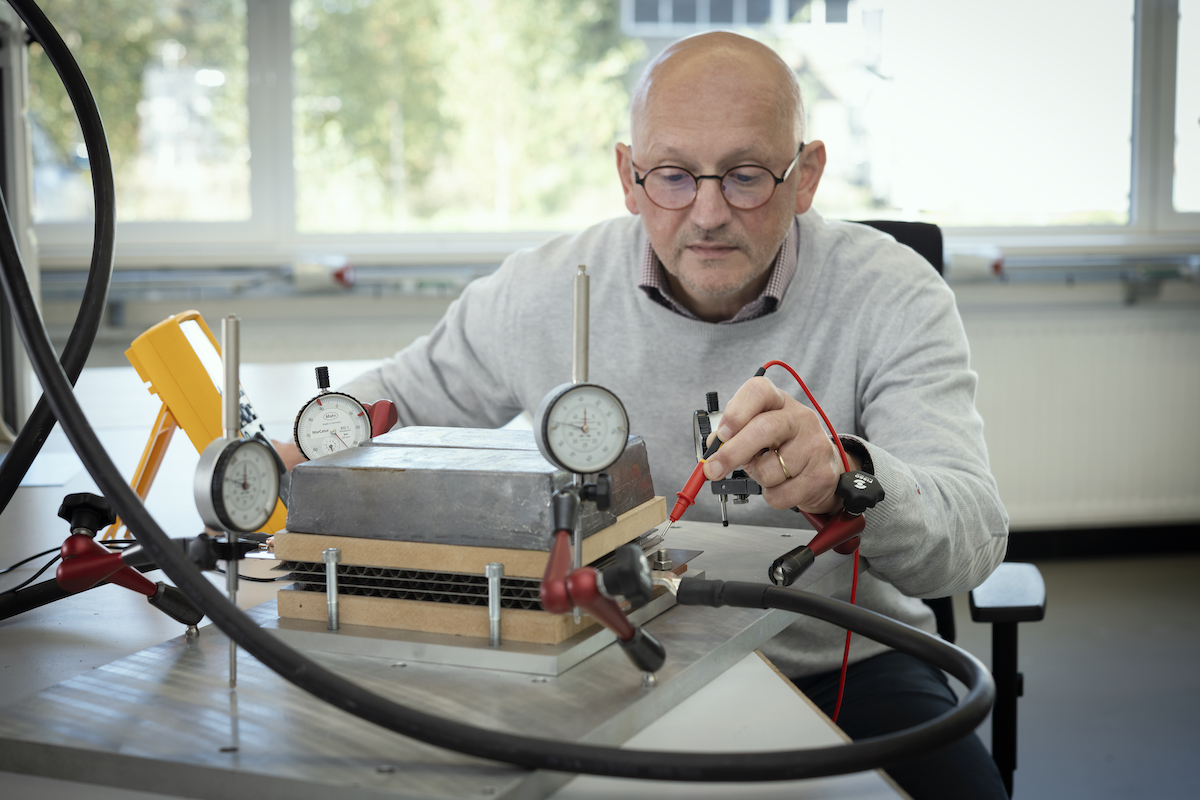Scalable electrolyzers have the inherent ability to support both appropriately sized and scalable projects. Since economic viability is crucial for every project, solution sizing, flexibility, and scalability are key factors to consider.
In this blog post we want to share:
How we have designed a new water electrolyzer that is both versatile and scalable, while incorporating two layers of redundancy;
Our belief that modularity is a key enabler for scalability.
Hydrogen is used in large and specialized industries, energy storage and buffering, as well as in mobility and transportation. Each segment has its own hydrogen volume requirements. Therefore, hydrogen production capacity is a crucial factor when selecting the most appropriate water electrolyzer for any project.

Scalable electrolyzers in support of scalable projects
Many industrial and specialized companies benefit from smaller, efficient, and reliable water electrolyzers. To help these clients purchase water electrolyzers that meet (but don’t exceed) their hydrogen production needs, we have developed a flexible and scalable solution that can operate in any location, both on and off the grid. This inherent versatility and scalability opens up pathways for growth: the capacity of our system can seamlessly grow with the demand of our clients.
A flexible and scalable solution
Our HyGGe™️ 100A water electrolyzer is designed for markets that require a modest yet steady supply of high-quality hydrogen. The standard unit, equipped with two of our proprietary cell stacks, can produce high-quality hydrogen continuously, with output reaching up to 100 Nm³/h or over 200 kg per day.
The system is designed to be ‘load-following,’ meaning that its production rate automatically adjusts to a lower level when the demand for hydrogen decreases. This offers a significant advantage in applications such as batch processing.
A higher production capacity can easily be achieved by adding additional units. A lower production capacity is possible by reducing the input power and/or using only one of the two cell stacks. This, of course, requires predefined flexibility in the power electronics and process control logic within the PLC and safety PLC. The latter also dynamically adjusts the output volume in response to increased cell voltage or temperature.
As such, our HyGGe™️ 100A water electrolyzer is an ideal solution for projects requiring hydrogen flows ranging from 20 Nm³/h to 500 Nm³/h.
Scalable electrolyzers bring an extra layer of redundancy
Our HyGGe™️ 100A water electrolyzer also incorporates two layers of redundancy.
The first layer of redundancy is at the cell stack level. In the unlikely event of a failure in one of the two cell stacks, the HyGGe™️ 100A water electrolyzer can continue operating on one cell stack, producing at half capacity.
The second layer of redundancy is at the unit level. Multiple water electrolyzers can easily be combined for higher hydrogen production volumes. In such a multi-unit setup, production output balancing to an agreed setpoint can be orchestrated using a master-follower configuration.
These two layers of redundancy ensure a steady hydrogen supply, regardless of demand fluctuations or technical issues with one of the cell stacks. In either case, redundancy offers a double benefit: it ensures production continuity and reliability while also providing a sensible approach to headroom capacity.
Pathways to scale
We agree with Carlos Bernuy-Lopez (Power-to-X, Green Hydrogen, and Thought Leader at Ramboll) that recent developments in renewable technologies have demonstrated that granularity (smaller and modular solutions) is the fastest way to achieve scalability.
This granular approach is even more advantageous because it reduces the effort and cost associated with meeting project de-risking requirements, as often mandated by funding institutions. Our scalable electrolyzers support scalable projects.
Modularity as a key enabler
Cost-effective scaling and operational flexibility are essential considerations in every hydrogen generation project and electrolyzer purchasing cycle. Modularity offers clear advantages by supporting both expansion and redundancy, thereby enhancing reliability and incrementally increasing capacity. Scalable electrolyzers accomodate these needs.
The design of our HyGGe™️ 100A electrolyzer unit allows for seamless integration into existing systems, infrastructures, or hydrogen supply chains. This feature is particularly beneficial for industries transitioning to hydrogen, as it minimizes the need for extensive modifications to their current setups.

What are your thoughts on scalable electrolyzers?
Scalable electrolyzers such as the new HyGGe™️ 100A electrolyzer have the inherent ability to support both appropriately sized and scalable projects. Since economic viability is crucial for every project, solution sizing, flexibility, and scalability are key factors to consider.
We are confident that our HyGGe™️ 100A electrolyzer has two benefits for the industry: scalability in the output and two layers of redundancy to secure the reliable production of high-quality hydrogen.
Do you see any further issues regarding hydrogen production that need a solution?
We look forward to hearing your thoughts and views on scalable electrolyzers and scalable projects in the comments section below.
Please get in touch through sales@exionhydrogen.com or +32 14 91 99 19.

